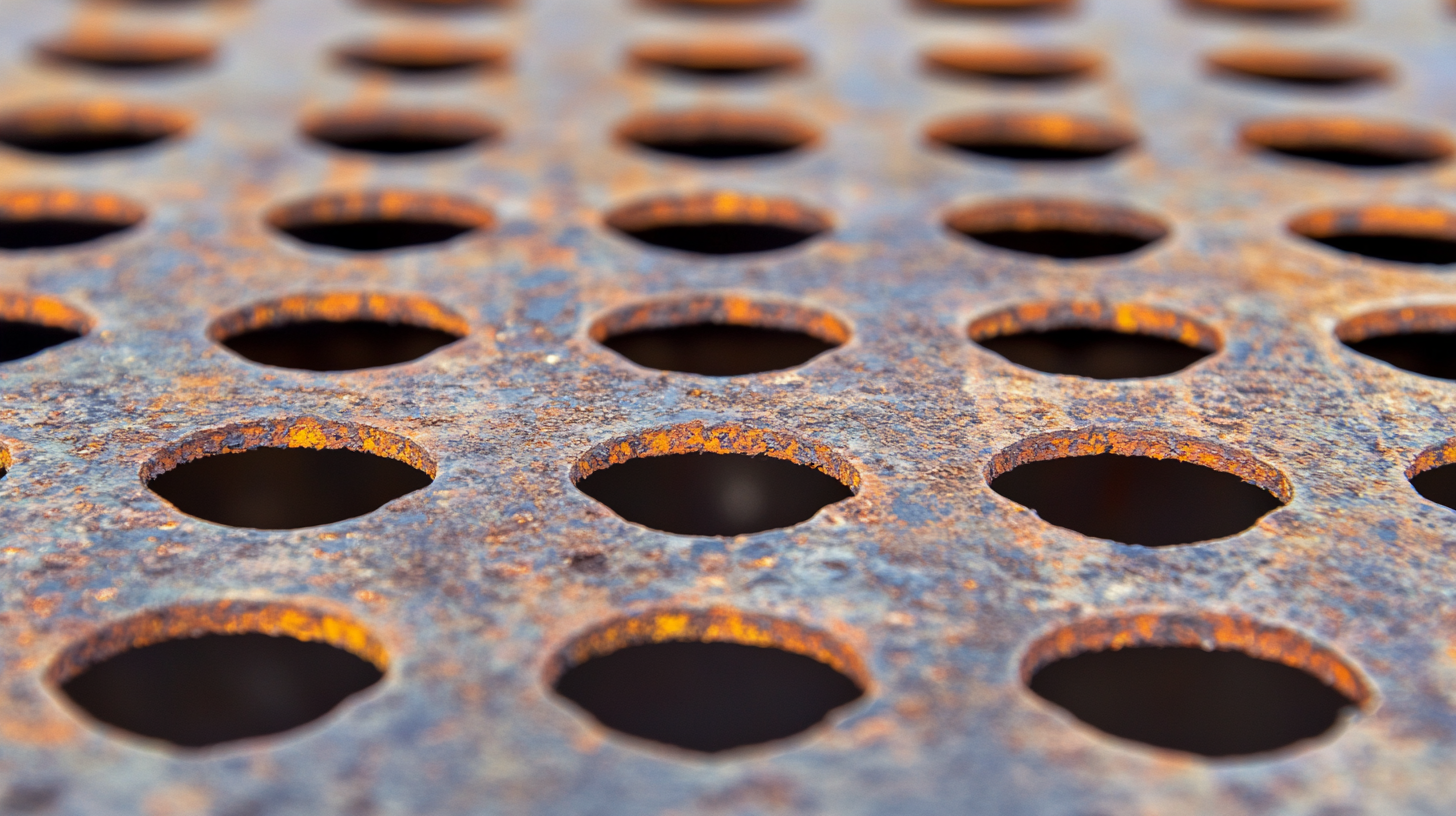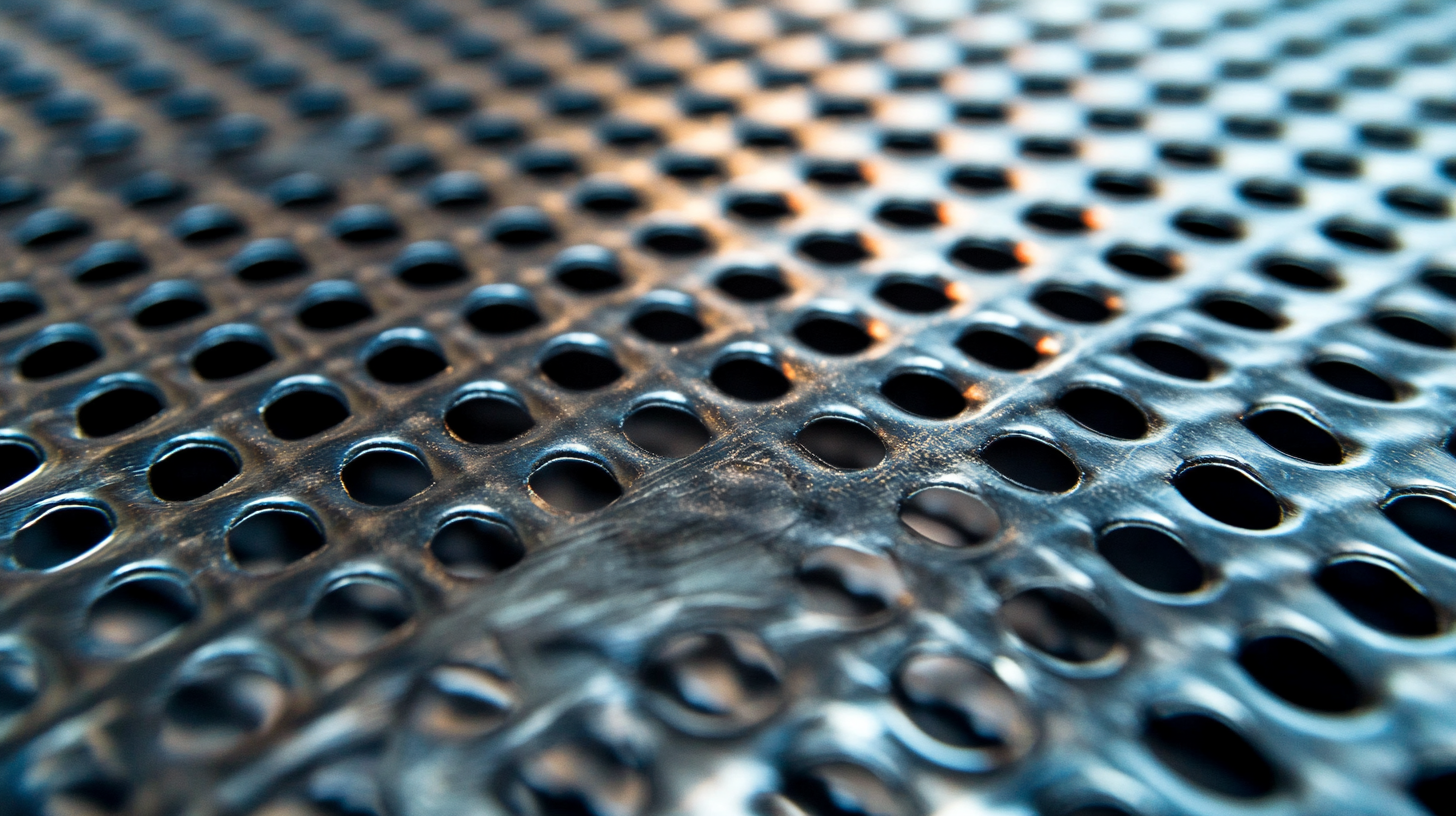In the realm of modern manufacturing and design, "Perforated Metal Mesh" has emerged as a vital component across a wide array of industries. This versatile material, characterized by its unique perforation patterns, not only enhances aesthetic appeal but also serves functional purposes in applications such as filtration, ventilation, and architectural design. As global buyers search for innovative solutions that combine durability and flexibility, understanding the various aspects of perforated metal mesh is essential. From the different manufacturing processes and materials available to the myriad applications it can serve, this ultimate overview aims to equip potential buyers with the knowledge needed to make informed decisions. Whether you are designing a building facade, creating functional screens, or developing specialized filtration systems, a comprehensive understanding of perforated metal mesh will significantly impact the quality and effectiveness of your projects. Join us as we delve into the intricate world of this remarkable material and explore its benefits, applications, and considerations for global buyers.

Perforated metal mesh is a versatile material known for its unique characteristics and a wide range of applications. One of its key features is its ability to provide ventilation while maintaining structural integrity. The evenly spaced holes in the mesh allow airflow and light penetration, making it ideal for architectural uses like facades, railings, and ceilings. Additionally, the variety of hole shapes, sizes, and patterns enables customization to meet specific design needs, allowing architects and designers to create striking visual effects while optimizing functionality.
Another important characteristic of perforated metal mesh is its strength and durability. Crafted from metals such as aluminum, stainless steel, or carbon steel, this mesh can withstand harsh environmental conditions, making it suitable for industrial applications like filtration, soundproofing, and vehicle grilles. Its robustness also lends itself to the manufacturing of safety barriers and protective screens in construction sites. As global buyers seek innovative solutions, the versatility and aesthetic appeal of perforated metal mesh position it as a top choice for a myriad of projects across different industries.
This chart illustrates the various characteristics of perforated metal mesh and their common applications in different industries.
When it comes to manufacturing perforated metal mesh, the choice of materials significantly influences both functionality and aesthetic appeal. Commonly used materials include stainless steel, aluminum, and mild steel, each offering unique benefits that cater to various applications. Stainless steel is prized for its corrosion resistance, making it ideal for environments exposed to moisture or chemicals. Its durability ensures longevity, making it a preferred choice in industries such as food processing and pharmaceuticals.
Aluminum, on the other hand, is known for its lightweight properties and excellent malleability, allowing for intricate designs without compromising strength. It is often favored in architectural applications where both performance and appearance are paramount. Mild steel, while more affordable, offers versatility in design and can be easily coated or painted for additional protection against wear and tear. Each material provides distinct advantages, ensuring that global buyers can select the perfect perforated metal mesh for their specific needs.
| Material Type | Common Application | Advantages | Disadvantages |
|---|---|---|---|
| Stainless Steel | Architecture, Filtration | Corrosion resistant, durable | Higher cost |
| Aluminum | Automotive, Consumer Goods | Lightweight, good corrosion resistance | Less strength than steel |
| Mild Steel | Construction, Industrial Applications | Cost-effective, strong | Prone to rusting |
| Copper | Electronics, Decorative Elements | Excellent conductivity, aesthetics | Expensive, can tarnish |
| Brass | Musical Instruments, Decorative Panels | Hygienic, good acoustic properties | Costly, softer than steel |
Perforated metal mesh has become increasingly important across various industries due to its remarkable versatility and functional benefits. This innovative material allows for light, air, and sound to pass through while maintaining structural integrity, making it ideal for applications in architecture, construction, and manufacturing. Recent developments highlight the growing prominence of perforated metal in enhancing both aesthetic appeal and operational efficiency. For instance, reports indicate that the global expanded metal foils market is projected to surge from USD 2.64 billion in 2024 to approximately USD 4.10 billion by 2034, showcasing the rising demand for such materials.
Innovative techniques like metal origami, which employs a simple folding method to create complex structures from sheet metal, further emphasize the capabilities of perforated metal mesh in fostering advanced design solutions. This method not only simplifies production but also significantly reduces costs, making it appealing to manufacturers and architects alike. Adding to this trend, collaborations between companies like KnitMesh Technologies and GKD are set to redefine the use of metal mesh in architectural applications, paving the way for novel designs that combine functionality with creative expression. As industries continue to explore modern architectural applications for perforated metal, its role in shaping the future of design remains undeniable.

When selecting perforated metal mesh, a few critical considerations should be kept in mind to ensure that the right product is chosen for your specific application. The first factor to consider is the material composition, which significantly influences durability, strength, and overall performance. For instance, aluminum offers lightweight properties and corrosion resistance, while stainless steel provides superior strength and is often preferred in industrial settings. According to industry reports, the choice of material can affect the lifespan of perforated metal, with aluminum lasting between 15 to 20 years in outdoor applications under favorable conditions.
Another important consideration is the hole size and pattern, as these variables dictate the mesh's functionality. Different applications, such as filtration, ventilation, and architectural features, require specific hole configurations. Data indicates that optimal hole sizes can range from 1/16 inch to 1 inch, with larger holes generally providing better airflow but reduced structural integrity. Furthermore, understanding the intended application can guide you in selecting the appropriate thickness of the mesh to balance weight and strength optimally.
Lastly, consider the finishing options available for the perforated metal. Treatments like powder coating or anodizing can enhance corrosion resistance and aesthetic appeal, which is essential for architectural applications. Research from various industry sectors shows that surface treatments can extend the service life of the metal by up to 30%, making proper finishing an essential aspect of your selection process.
The global market for perforated metal mesh is poised for significant growth, driven by evolving trends in various industries. As we look towards the future, the integration of advanced technologies across sectors such as construction, automotive, and data centers underscores the increasing reliance on materials like perforated metal. The ongoing expansion in the semiconductor industry, projected to attain a remarkable 19% growth in 2024, highlights a robust demand for lightweight yet durable materials, which perfectly positions perforated metal mesh as a favored choice for various applications.
Moreover, the rising focus on sustainability is steering the market toward innovative solutions in battery recycling and electric vehicle production. As the electric vehicle battery demand continues to surge, driven by an increase of 40% in usage from the previous year, the need for efficient manufacturing processes becomes clear. Perforated metal mesh can enhance production methodologies, proving its value in meeting the demands of a rapidly changing landscape. Additionally, as data centers contend with power supply challenges, the utility of perforated metal for cooling and structural solutions adds to its appeal, further solidifying its place in the future of global supply chains.

